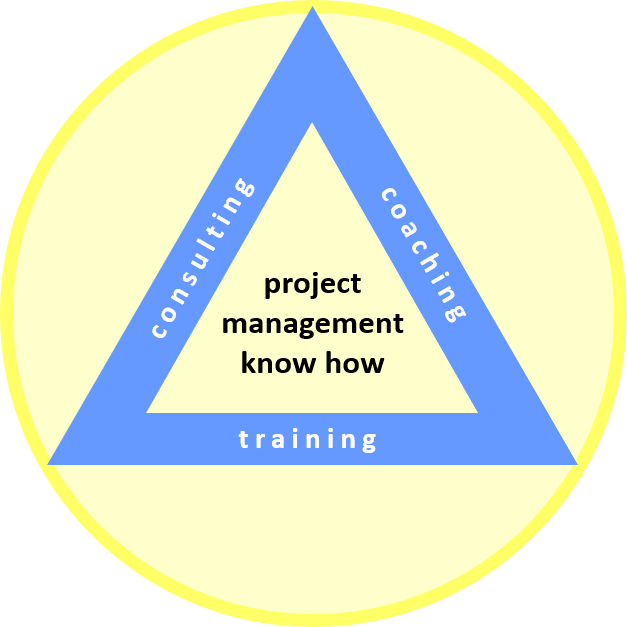- Home
- Fundamentals
- Project Management Basics
Project Management Basics
Published: 2009-09-15
Last updated: 2022-03-06
Project management basics, as we present them here, summarize some basic thoughts we assume as general prerequisites across this whole web site.
Internal and External Projects
Except in section Project Portfolio Management, where we present aspects of project management on an enterprise level, and in sub-section Contract Management, we do not clearly differentiate between internal and external projects of an organization. A differentiating characteristic could be the existence of a contract that is signed by at least two legal entities, usually a customer and a supplier. In such a case, the supplier agrees to deliver a certain project scope, and the customer agrees to pay for that. From the view of the supplier, we could call this an external project. Other projects the supplier's organization is undertaking would be internal projects.
Example (1):
A power generating company (= customer) contracts an electrical engineering company (= supplier) for engineering and construction of a new power plant. From the view of the electrical engineering company, this would be an external project.
Example (2):
That same electrical engineering company decides to extend their portfolio by developing a new type of switch for high voltage DC of up to 400 kV. From their point of view this would be an internal project.
Example (3):
The electrical engineering company decides to undergo a major restructuring procedure in order to make their service business become an integral part of their turnkey project business. Therefore, they start a restructuring project for that purpose. This is another internal project for that company.
Actually, we consider this a rather artificial differentiation that might only have academic value, if at all. The reason why we think so is that even for those so-called internal projects, we have customer-supplier-like relationships. In example (2), the marketing and sales department acts like a customer who "contracts" the research and development department for developing the new switch; in example (3), the management board of that company acts like a customer, and "contracts" the service and the turnkey projects departments to carry out the restructuring project. In these two cases, we just will not have formal contracts in place, whereas informal contracts could very well exist.
For that reason, we consciously avoid the differentiation between internal and external projects. As one of our project management basics, we rather adopt the assumption that in each and every project we will have several different (legal) entities willing to contribute to the success of a project they jointly undertake.
Project Management Framework
In section Project Portfolio Management, sub-section Multi Project Management, we present aspects of organizing for projects, especially the idea of the project management office (PMO). The PMO usually refers to a special department in an organization which identifies and supports internal standards of project management processes. Some organizations call the PMO their project management framework.
In our understanding, a project management framework does not only refer to a department taking care of project management processes, but in fact the framework of those processes themselves. In that, it is a framework of processes and rules that describe how we should practice project management.
Project Management Technique
Project management, as described in most of the available literature, and described on this web site as well, is based on a classical way of solving problems: we encounter a problem, describe it, decompose it into smaller parts and sub-parts, solve the sub-parts and the parts of it in form of sub-solutions, and compose an overall solution to the original problem out of the sub-solutions.
This represents the project management version of the general problem solving technique of analysis and synthesis: analyze the problem into smaller parts (PBS and WBS), create solutions for the parts, and synthesize these into a solution of the whole, represented by a project plan and its implementation.
These are our project management basics and in that sense, what we present on this web site, we also can call project management technique: analysis, followed by synthesis.
35+ templates, tools, and checklists in one set
To save you time in your daily work as a project manager, I packaged more than 35 project management templates, tools, and checklists into one zip file.
- You un-zip it, and you get all items in formats you can edit to your requirements.
- They strictly contain only standard functionality and no macros or other code.
- You are allowed to use your logo.
or click here for more info.
Traditional PM
Learning Path Navigation
|
|
|
Return to Fundamentals of Project Management
Return from Project Management Basics to Home Page
|
|
|


Your Comments
Have your say about what you just read! Leave me a comment in the box below.